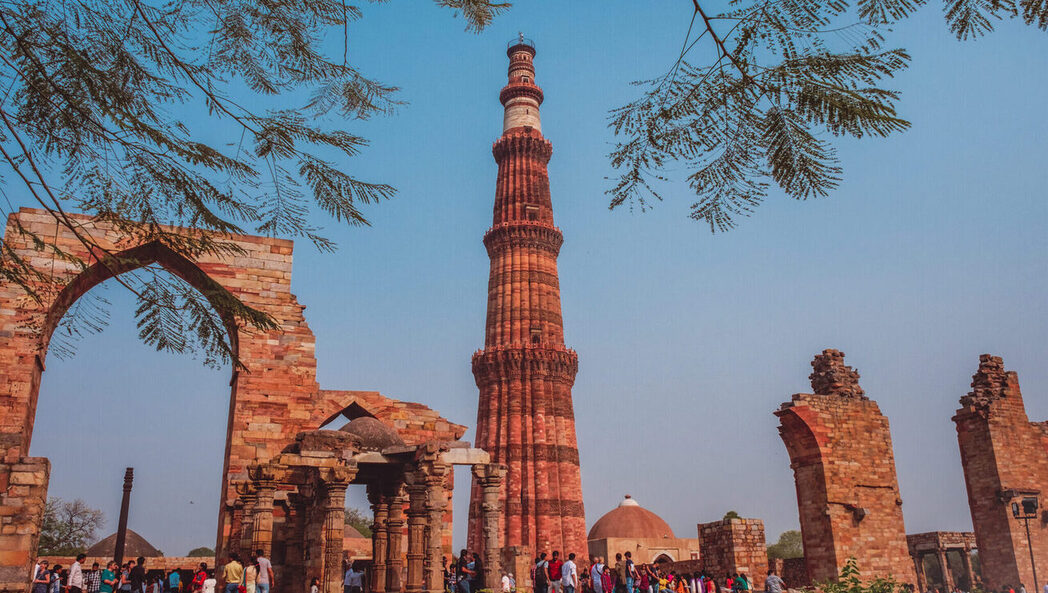History of Qutub Minar
Qutub Minar is a UNESCO World Heritage Site located in Delhi, India. It is a towering minaret that stands at a height of 239 feet and is the tallest brick minaret in the world. The minaret was built in the early 13th century by Qutbuddin Aibak, the first Muslim ruler of Delhi, and was later completed by his successors.
The Qutub Minar is made of red sandstone and marble, and is adorned with intricate carvings and inscriptions. The minaret has five storeys, each of which is marked by a projecting balcony. The balconies and the walls of the minaret are adorned with verses from the Quran and other religious inscriptions. The top story of the tower features a balcony, which was used by the muezzin (the person who calls Muslims to prayer) to give the call to prayer
Over the years, Qutub Minar has undergone several renovations and restorations, and it has survived several earthquakes and other natural disasters. Today, it is a popular tourist attraction and is visited by thousands of people every year.
Qutub Minar Open Today?
.Nearest Metro Station to Qutub Minar?
Qutub Minar closed on which day?
Places to Visit in Qutub Minar
There are several places to visit within the complex of the Qutub Minar in Delhi, India. Some of the notable places to visit are:
- Qutub Minar: The towering minaret is the main attraction of the complex and is a UNESCO World Heritage Site. It stands at a height of 239 feet and is the tallest brick minaret in the world.
- Quwwat-ul-Islam Mosque: This is the first mosque to be built in India and is made of materials scavenged from the temples of the defeated Hindu kingdoms. It is an important place of worship for Muslims.
- Alai Darwaza: This is a stunning gateway that was built by Alauddin Khalji, the second ruler of the Khalji dynasty. It is a fine example of Indo-Islamic architecture and is adorned with intricate carvings.
- Alai Minar: This is a partially completed minaret that was planned to be twice the height of the Qutub Minar, but was never completed due to the death of Alauddin Khalji. It is a testament to the grand plans of the Khalji dynasty.
- Iron Pillar: This is a 7th-century pillar that is made of iron and stands in the courtyard of the mosque. It is believed to have been brought from the Gupta period and has been standing in the same spot for over 1,600 years without rusting.
In addition to these places, the complex also includes several other historical structures such as the Tomb of Iltutmish and the Sanderson's Sundial. Visitors can also explore the gardens and walkways within the complex.
Qutub Minar Opening and Closing Hours or Timings?
Qutub Minar Address?
How to reach Qutub Minar?
The Qutub Minar is not just a stunning architectural marvel, but also has a rich history. It is believed to have been built as a symbol of victory and as a tribute to the Sufi saint Qutbuddin Bakhtiar Kaki. It is also believed to have been used as a watchtower and a place for the muezzin to call the faithful to prayer.
Architecture of Qutub Minar
Qutub Minar is an excellent example of Indo-Islamic architecture, which is a blend of Indian and Islamic architectural styles. It is a tall, slender tower with five stories, each of which is adorned with intricate carvings and inscriptions. The tower is made of red sandstone, which gives it a distinctive red color.
The tower has a diameter of 14.3 meters at the base and tapers towards the top. It stands about 239 feet tall and is topped with a balcony, which was used by the muezzin (the person who calls Muslims to prayer) to give the call to prayer. The tower is surrounded by a courtyard, which is surrounded by several other historical buildings and monuments.
The base of the tower is adorned with Hindu-style carvings and motifs, while the upper stories feature Islamic architectural elements such as arches, domes, and inscriptions in Arabic script. The tower is also adorned with intricate carvings and inscriptions, which depict various scenes from Islamic history and mythology.
Overall, the architecture of Qutub Minar is a unique blend of Indian and Islamic styles, and it is an important example of the cultural and architectural influences that shaped India during the Delhi Sultanate period.
Qutub Minar Video
The Qutub Minar is a popular tourist attraction and attracts thousands of visitors every year. It is a testament to the rich history and culture of India and is a must-visit destination for anyone visiting Delhi.

